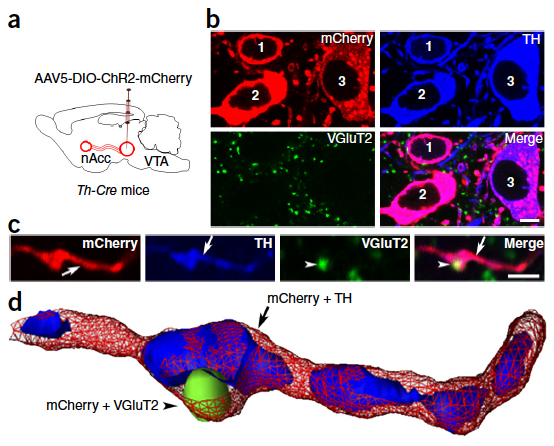Hot Off the Press! – February 2015

Zhang, Shiliang; Qi, Jia; Li, Xueping; Wang, Hui-Ling; Britt, Jonathan P; Hoffman, Alexander F; Bonci, Antonello; Lupica, Carl R; Morales, Marisela
Dopaminergic and glutamatergic microdomains in a subset of rodent mesoaccumbens axons. Journal Article
In: Nat Neurosci, vol. 18, no. 3, pp. 386–392, 2015, ISSN: 1546-1726 (Electronic); 1097-6256 (Linking).
@article{Zhang2015,
title = {Dopaminergic and glutamatergic microdomains in a subset of rodent mesoaccumbens axons.},
author = {Shiliang Zhang and Jia Qi and Xueping Li and Hui-Ling Wang and Jonathan P Britt and Alexander F Hoffman and Antonello Bonci and Carl R Lupica and Marisela Morales},
url = {https://www.ncbi.nlm.nih.gov/pubmed/25664911},
doi = {10.1038/nn.3945},
issn = {1546-1726 (Electronic); 1097-6256 (Linking)},
year = {2015},
date = {2015-03-01},
journal = {Nat Neurosci},
volume = {18},
number = {3},
pages = {386--392},
address = {National Institute on Drug Abuse, Neuronal Networks Section, US National Institutes of Health, Baltimore, Maryland, USA.},
abstract = {Mesoaccumbens fibers are thought to co-release dopamine and glutamate. However, the mechanism is unclear, and co-release by mesoaccumbens fibers has not been documented. Using electron microcopy, we found that some mesoaccumbens fibers have vesicular transporters for dopamine (VMAT2) in axon segments that are continuous with axon terminals that lack VMAT2, but contain vesicular glutamate transporters type 2 (VGluT2). In vivo overexpression of VMAT2 did not change the segregation of the two vesicular types, suggesting the existence of highly regulated mechanisms for maintaining this segregation. The mesoaccumbens axon terminals containing VGluT2 vesicles make asymmetric synapses, commonly associated with excitatory signaling. Using optogenetics, we found that dopamine and glutamate were released from the same mesoaccumbens fibers. These findings reveal a complex type of signaling by mesoaccumbens fibers in which dopamine and glutamate can be released from the same axons, but are not normally released at the same site or from the same synaptic vesicles.},
keywords = {},
pubstate = {published},
tppubtype = {article}
}
Mesoaccumbens fibers are thought to co-release dopamine and glutamate. However, the mechanism is unclear, and co-release by mesoaccumbens fibers has not been documented. Using electron microcopy, we found that some mesoaccumbens fibers have vesicular transporters for dopamine (VMAT2) in axon segments that are continuous with axon terminals that lack VMAT2, but contain vesicular glutamate transporters type 2 (VGluT2). In vivo overexpression of VMAT2 did not change the segregation of the two vesicular types, suggesting the existence of highly regulated mechanisms for maintaining this segregation. The mesoaccumbens axon terminals containing VGluT2 vesicles make asymmetric synapses, commonly associated with excitatory signaling. Using optogenetics, we found that dopamine and glutamate were released from the same mesoaccumbens fibers. These findings reveal a complex type of signaling by mesoaccumbens fibers in which dopamine and glutamate can be released from the same axons, but are not normally released at the same site or from the same synaptic vesicles.
